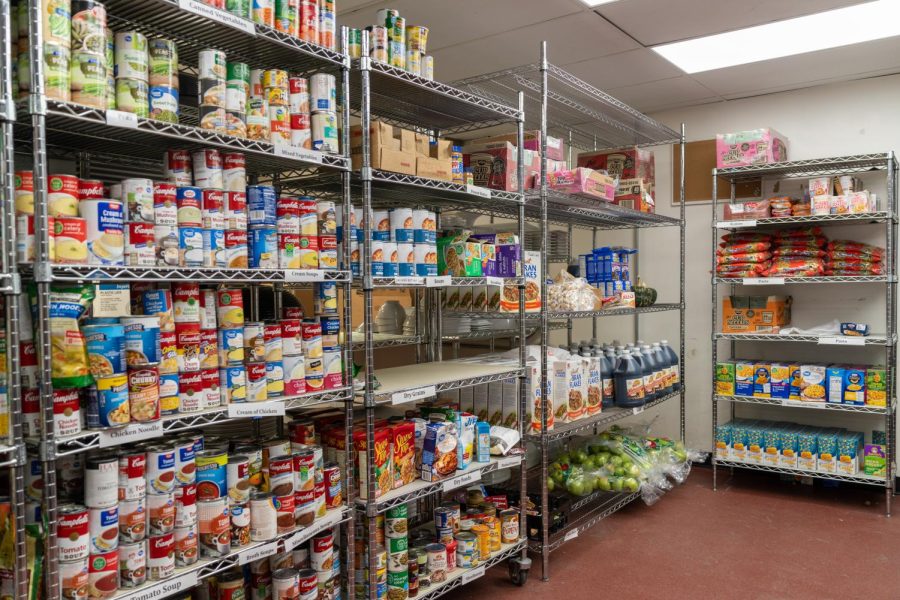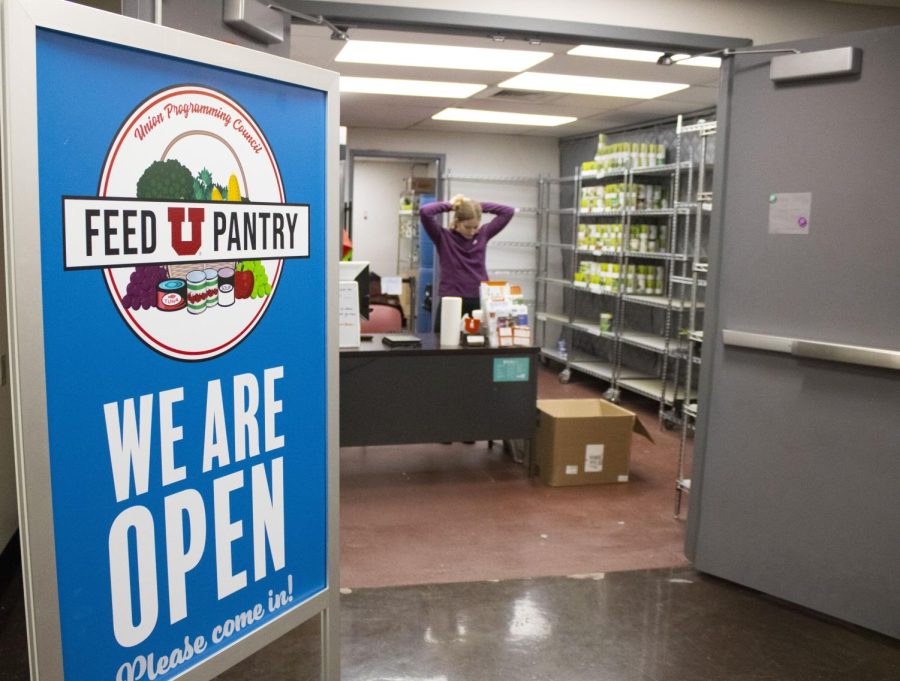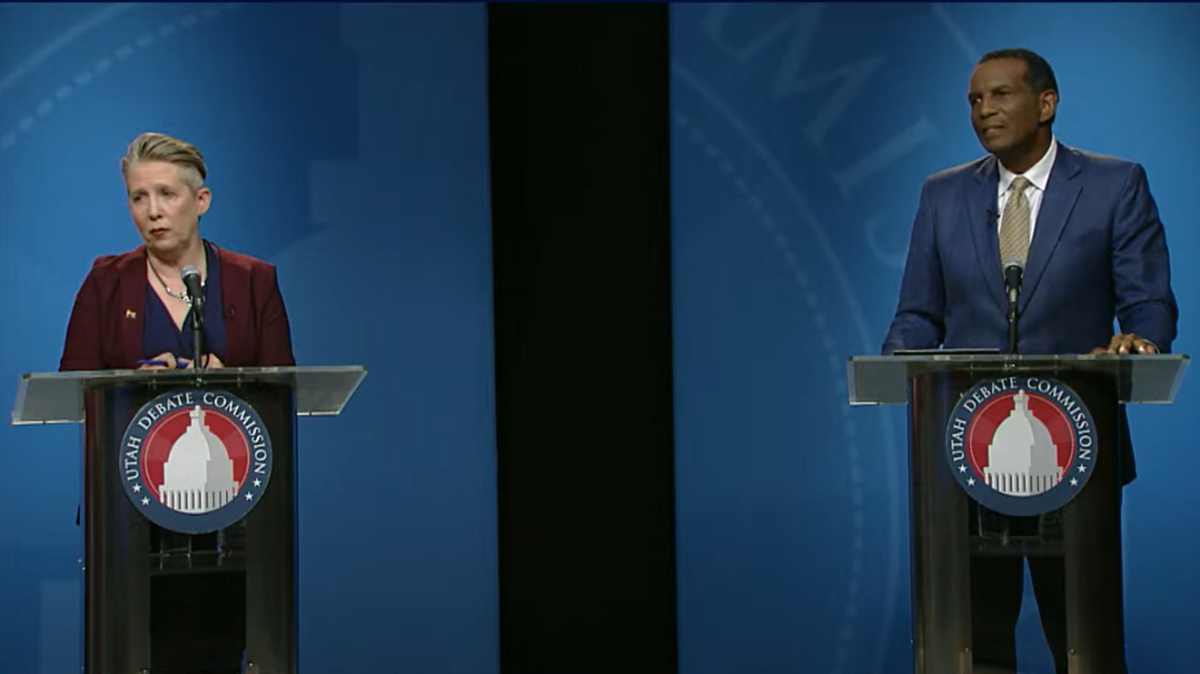Options on Campus and in SLC for Students with Food Insecurity
The Feed U Pantry at the A. Ray Olpin Student Union in Salt Lake City on Nov. 1, 2022. (Photo by Sophie Felici | The Daily Utah Chronicle)
May 24, 2023
Food insecurity is a growing national problem, and Utah is no exception. According to Feeding America, one in 11 people — and one in ten children — face hunger in Utah. Nationally, an estimated 40% of college students face food insecurity.
Jeanette Padilla is the president and CEO of the Food Justice Coalition, a Salt Lake City-based nonprofit focused on improving food insecurity for Utahns. She said food insecurity has only gotten worse over the last few years due to the pandemic and rising food prices.
The federal government also recently cut increased emergency food-stamp benefits for over 30 million Americans enrolled in the Supplemental Nutrition Assistance Program.
Padilla added that FJC is “very aware” of food insecurity problems on college campuses, and they have recently partnered with the Feed U Pantry.
“About once a week, we provide 50 or so meals to the pantry so students can have free, nutrient-dense, ready-to-eat meals,” she said.

FJC also has a free lunch program that was forced to be paused indefinitely while they search for their own facility. They used to serve meals out of ComComKitchen, a commissary kitchen, but the building owner told Padilla she could no longer provide meals in November.
They shifted to doing it out of Publik Coffee, but Padilla said this was not as accessible for people struggling with food insecurity due to the public nature of the location.
“We’ve been struggling since to try to make this program accessible for people and to make it more private and do away with the stigma,” she said. “But these are really big challenges, and we’re a very small nonprofit.”
Students who want to support FJC in their search for a facility can donate on their website.
At the University of Utah, there are several options for students who may be facing hunger or food insecurity.
Dining Services at the U includes two “all you care to eat” dining facilities, located in the Peterson Heritage Center and Kahlert Village residential buildings.
David Ko, associate director of Dining Services, said that these facilities offer QR code ordering as well as buffet options. He added that meals are also transferable to other options such as the Honors Market or Miller Cafe.
“The intentionality there is to offer as much flexibility as we can for students,” he said.
Dining halls can be accessed by purchasing a meal plan. Residential meal plans come in both weekly and block formats and range from $2,262 to $5,468 for the academic year. Commuter plans function similarly but are purchased on a semesterly basis and prices range from $1,029 to $2,489.
“I think we’ve intentionally priced those at a very accessible level,” Ko said. “Our goal is that any student can access these meal plans.”
For students without a meal plan, the primary resource at the U to combat food insecurity and hunger is the Feed U Pantry.
Ashton Pelley, director of the pantry, said it mitigates food insecurity on campus and is open to anyone with a valid U card. They offer free nutrient-dense food as well as hygiene products.
“Our clients can use the pantry no questions asked, as much as they want, as many times a month and can take as much food as they’d like,” Pelley said.
She added that no U student should have to face food insecurity while getting an education.
“We’re there to help people worry about one less thing while obtaining their degree,” she said.
The pantry is entirely donation-based and regularly hosts food and hygiene drives in collaboration with other campus partners.
Pelley said their recent partnership with FJC, as well as the Bountiful Food Pantry, was necessary due to the increased demand for the pantry’s products.
“Usually we were giving out about 2000 pounds [of product] a month,” she said. “However, in August and September, we were giving out upwards of 6000 pounds.”
All students need to do to use the pantry is go to the basement of the Union and fill out an initial intake form, which Pelley said takes five to 10 minutes. Then they are free to use the pantry as much as needed.
“Oftentimes, it can be scary asking for that help or using a resource, given the nature of the food pantry,” she said. “But we have such amazing volunteers that are so welcoming, and are so willing and able to help.”
This article was updated on June 6, 2023 to include a link to ComComKitchen’s website.










